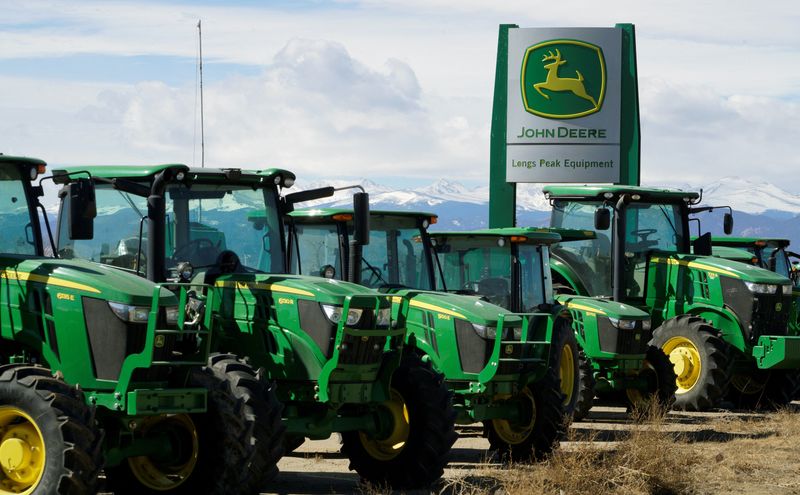By Bianca Flowers
CHICAGO (Reuters) - U.S. equipment makers are likely to face excess inventory early next year as demand from farmers and construction companies cools, though second-quarter profit is expected to remain strong.
Equipment dealers have struggled to keep tractors and combines in stock due to strong demand and supply-chain snarls that have kept prices high and orders on backlog. They may soon face the opposite problem of having too much inventory as demand eases just as production picks up, industry experts said.
"We're watching this closely because we don't want to get ourselves to where there's an oversupply," said John Schmeiser, COO of North American Equipment Dealers Association (NAEDA), a trade group that represents independent dealers.
Machinery sitting idle on dealer lots could jeopardize manufacturers' margins next year.
In recent quarters, heavy equipment manufacturers including Deere (NYSE:DE) & Co and Caterpillar (NYSE:CAT) have handily beaten Wall Street earnings.
A slump for new orders from farmers and commercial customers should make machinery manufacturers more conservative with production, said Baird senior research analyst Mircea Dobre.
"If we continue to see these inventory increases, that essentially poses a risk for production in 2024."
Higher borrowing costs have also battered manufacturing, with the Institute for Supply Management reporting this month that its manufacturing PMI remained stuck below the 50 threshold in June for the eighth straight month. The downturn in new orders for machinery and equipment, which includes construction and farming, outpaced all other manufacturing industries, according to data by S&P Global (NYSE:SPGI).
But Caterpillar has touted resilient sales from mining customers and an increase in construction sales stemming from U.S. infrastructure spending. Deere and CNH Industrial (NYSE:CNHI), which reports earnings on Friday, continue to see operating margins for precision and agriculture products trend upward as farmers look to cut costs on crop inputs, such as fertilizers and pesticide applicators.

While farmers' balance sheets remain relatively strong, economists at the Federal Reserve Bank of St. Louis are citing "profitability concerns" in the second half of the year for growers and the agriculture sector.
Caterpillar is expected to post second-quarter earnings next week of $2.37 billion, up 39.5% from a year ago. Its rival Deere is projected to post solid growth as well with net income of $2.39 billion, a nearly 32% increase from the prior year. Deere will report third-quarter results on Aug. 18.